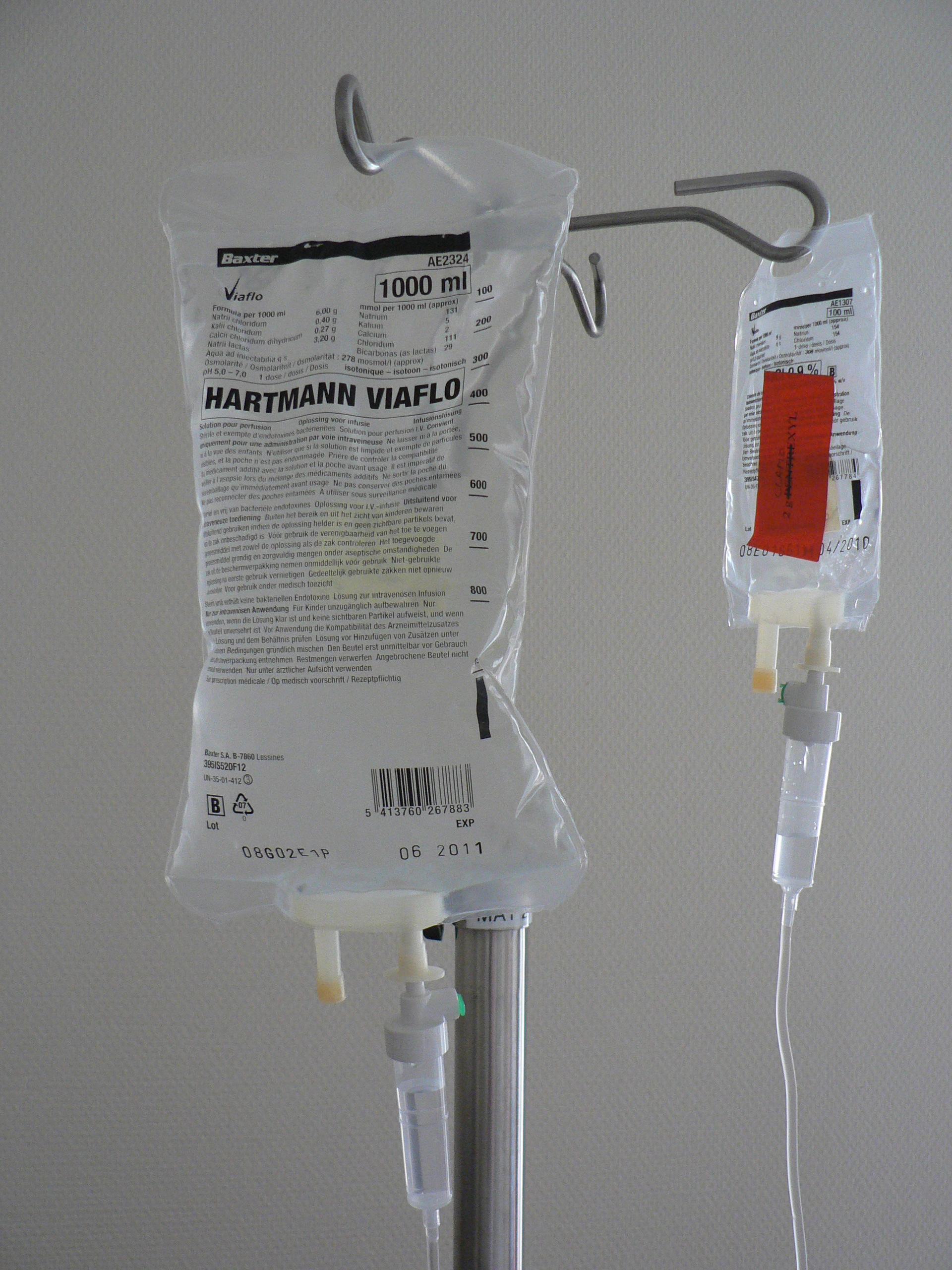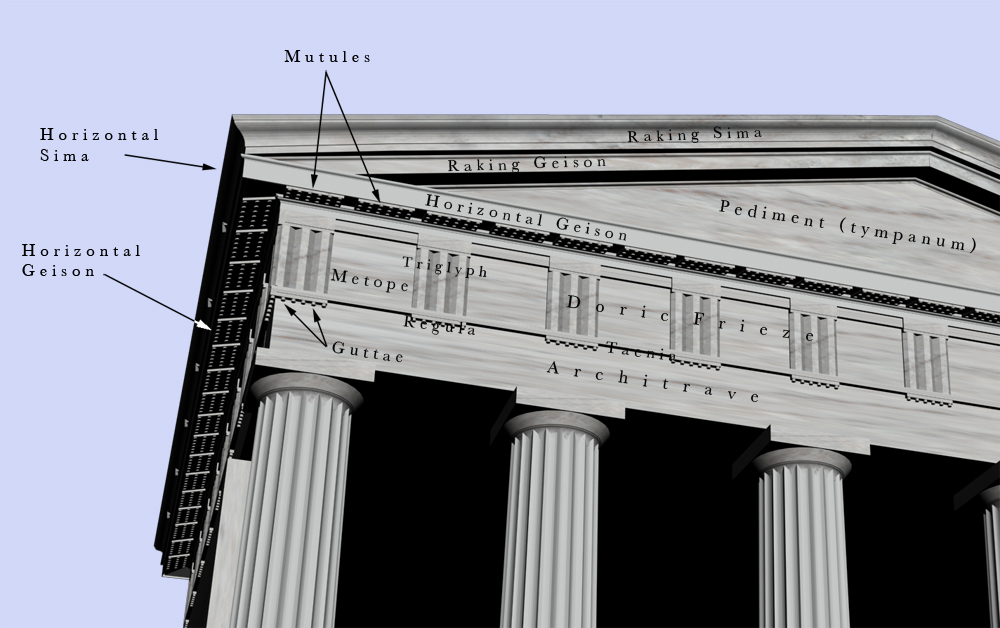|
Drip Chamber
A drip chamber is a device used to allow gas (such as air) to rise out from a fluid so that it is not passed downstream. It is commonly employed in delivery systems of intravenous therapy and acts to prevent air embolism. The use of a drip chamber also allows an estimate of the rate at which fluid is administered. For a fluid of a given viscosity, drips from a hole of known size will be of nearly identical volume, and the number of drips in a minute can be counted to gauge the rate of flow. In this instance the rate of flow is usually controlled by a clamp on the infusion tubing; this affects the resistance to flow. However, other sources of resistance (such as whether the vein is kinked or compressed by the patient's position) cannot be so directly controlled and a change in position may change the rate of flow leading to inadvertently rapid or slow infusion. Where this might be problematic an infusion pump can be used which gives a more accurate measurement of flow rate. Drip ... [...More Info...] [...Related Items...] OR: [Wikipedia] [Google] [Baidu] |
Intravenous Therapy
Intravenous therapy (abbreviated as IV therapy) is a medical technique that administers fluids, medications and nutrients directly into a person's vein. The intravenous route of administration is commonly used for rehydration or to provide nutrients for those who cannot, or will not—due to reduced mental states or otherwise—consume food or water by mouth. It may also be used to administer medications or other medical therapy such as blood products or electrolytes to correct electrolyte imbalances. Attempts at providing intravenous therapy have been recorded as early as the 1400s, but the practice did not become widespread until the 1900s after the development of techniques for safe, effective use. The intravenous route is the fastest way to deliver medications and fluid replacement throughout the body as they are introduced directly into the circulatory system and thus quickly distributed. For this reason, the intravenous route of administration is also used for the consump ... [...More Info...] [...Related Items...] OR: [Wikipedia] [Google] [Baidu] |
Air Embolism
An air embolism, also known as a gas embolism, is a blood vessel blockage caused by one or more bubbles of air or other gas in the circulatory system. Air can be introduced into the circulation during surgical procedures, lung over-expansion injury, decompression, and a few other causes. Air embolisms may also occur in the xylem of vascular plants, especially when suffering from water stress. Divers can develop ''arterial'' gas embolisms as a consequence of lung over-expansion injuries. Breathing gas introduced into the venous system of the lungs due to pulmonary barotrauma will not be trapped in the alveolar capillaries, and will consequently be circulated to the rest of the body through the systemic arteries, with a high risk of embolism. Inert gas bubbles arising from decompression are generally formed in the ''venous'' side of the systemic circulation, where inert gas concentrations are highest, these bubbles are generally trapped in the capillaries of the lungs where the ... [...More Info...] [...Related Items...] OR: [Wikipedia] [Google] [Baidu] |
Viscosity
The viscosity of a fluid is a measure of its resistance to deformation at a given rate. For liquids, it corresponds to the informal concept of "thickness": for example, syrup has a higher viscosity than water. Viscosity quantifies the internal frictional force between adjacent layers of fluid that are in relative motion. For instance, when a viscous fluid is forced through a tube, it flows more quickly near the tube's axis than near its walls. Experiments show that some stress (such as a pressure difference between the two ends of the tube) is needed to sustain the flow. This is because a force is required to overcome the friction between the layers of the fluid which are in relative motion. For a tube with a constant rate of flow, the strength of the compensating force is proportional to the fluid's viscosity. In general, viscosity depends on a fluid's state, such as its temperature, pressure, and rate of deformation. However, the dependence on some of these properties is ... [...More Info...] [...Related Items...] OR: [Wikipedia] [Google] [Baidu] |
Infusion Pump
An infusion pump Intravenous infusion, infuses fluids, medication or nutrients into a patient, patient's circulatory system. It is generally used intravenously, although Subcutaneous injection, subcutaneous, artery, arterial and epidural infusions are occasionally used. Infusion pumps can administer fluids in ways that would be impractically expensive or unreliable if performed manually by nursing staff. For example, they can administer as little as 0.1 mL per hour injections (too small for a drip), injections every minute, injections with repeated Bolus (medicine), boluses requested by the patient, up to maximum number per hour (e.g. in patient-controlled analgesia), or fluids whose volumes vary by the time of day. Because they can also produce quite high but controlled pressures, they can inject controlled amounts of fluids subcutaneously (beneath the skin), or epidurally (just within the surface of the central nervous system – a very popular local spinal anesthesia for chi ... [...More Info...] [...Related Items...] OR: [Wikipedia] [Google] [Baidu] |
Guttae (medical)
A gutta (Latin pl. guttae, "drops") is a small water-repelling, cone-shaped projection used near the top of the architrave of the Doric order in classical architecture. At the top of the architrave blocks, a row of six ''guttae'' below the narrow projection of the taenia (fillet) formed an element called a regula. A ''regula'' was aligned under each triglyph of the Doric frieze. In addition, the underside of the projecting geison above the frieze had rectangular protrusions termed ''mutules'' that each had three rows of six ''guttae''. These mutules were aligned above each triglyph and each metope. It is thought that the guttae were a skeuomorphic representation of the pegs used in the construction of the wooden structures that preceded the familiar Greek architecture in stone. However, they have some functionality, as water drips over the edges, away from the edge of the building. Outside the Doric In the strict tradition of classical architecture, a set of guttae always ... [...More Info...] [...Related Items...] OR: [Wikipedia] [Google] [Baidu] |




